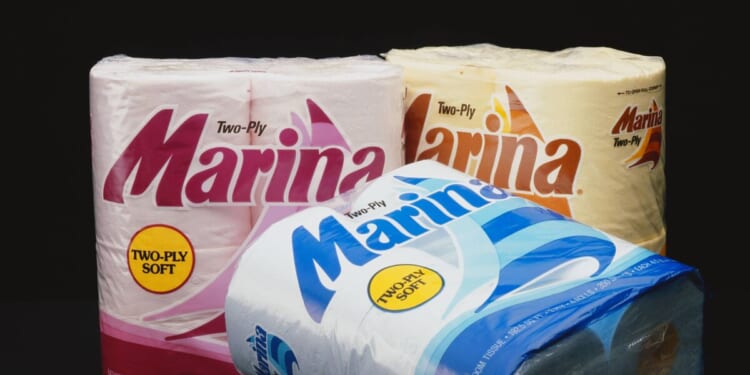Once a common sight in bathrooms across the nation, pastel-coloured toilet rolls in shades of peach, mint, and baby blue have now become a thing of the past. But what led to the silent exit of this once-beloved product from our supermarket aisles?
The downfall of the coloured loo roll wasn’t a sudden occurrence, but rather a gradual decline driven by health fears, environmental concerns, and shifting consumer preferences.
From the 1970s through to the early noughties, coordinating your toilet paper with your bathroom decor was seen as a mark of a well-considered home. Manufacturers provided a spectrum of options, allowing for a harmonious blend of practicality and Farrow and Ball-esque coordination.
However, as we entered the new millennium, these colourful rolls began to disappear, leaving behind a sea of white.
One of the primary reasons for this change was an increasing public awareness around health and wellbeing, with worries about the dyes used to produce the signature pastel hues potentially causing irritation to sensitive body areas, reports the Mirror.
Studies linked the dyes to skin irritation, allergies, and urinary tract infections, leading many to choose the perceived purity of plain white paper.
Following closely on the heels of these health concerns were environmental issues surrounding the production processes of everyday items. The dyeing process required more water and energy than its plain counterpart, while the dyes themselves were often not biodegradable.
Another blow was the transformation of British bathrooms, with the trend for bold, coloured bathroom suites giving way to a more minimalist and neutral palette.
Crisp white porcelain, chrome fixtures, and natural materials became the aspirational look, rendering the matching toilet roll an outdated accessory. The once-fashionable peach roll now clashed with the chic, spa-like sanctuaries homeowners were striving to create.
However, what finally did for the coloured toilet roll was the Covid pandemic. Remember when toilet paper was treated like gold?
The great toilet paper shortage of the early pandemic further solidified the dominance of the no-frills white roll, as manufacturers focused on producing as much of the basic necessity in the face of unprecedented demand as quickly as possible,.
While a niche market for coloured toilet paper still exists online, its mainstream moment has undoubtedly passed.
The story of the coloured toilet roll’s disappearance is a testament to the shifting priorities of the British consumer, where health, environmental responsibility, and a minimalist aesthetic have triumphed over the once-fashionable allure of a perfectly colour-co-ordinated loo.

















